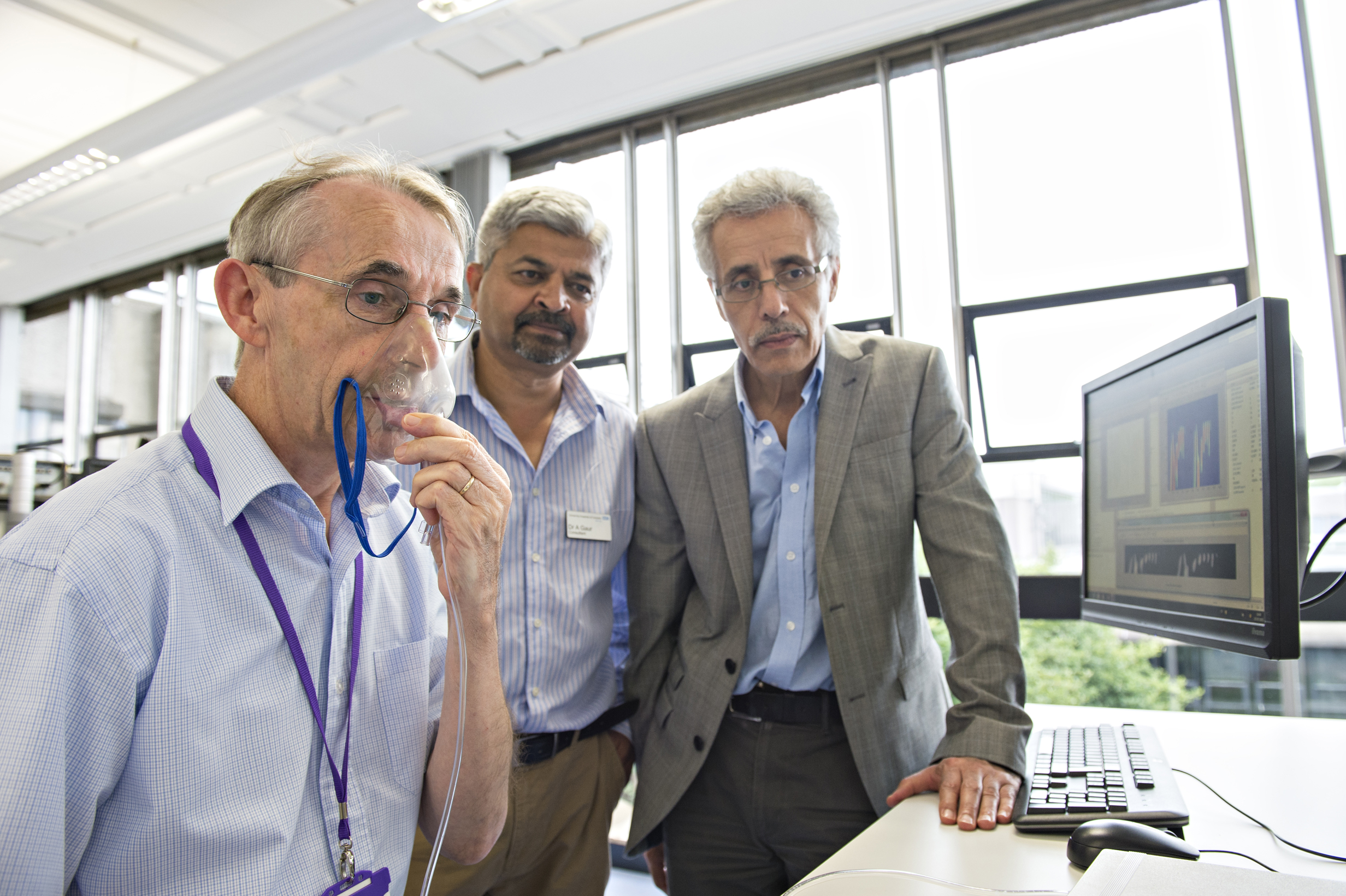Giving a voice to the paralysed
There is currently no cure for permanent paralysis, but assistive technology has played an important role in helping to improve the quality of life of those with paralysis.
Here in the School of Mechanical and Manufacturing Engineering, we have developed a pioneering device that transforms people with paralysis breath into words.
We began this work originally after being contacted by Dr Atul Gaur, Consultant Anaesthetist at Leicester’s Hospitals, whose immediate concern was to help patients on ventilator machines in Glenfield Hospital’s critical care unit.
We visited the hospital with Atul and we were very moved to see the plight of these patients, who appeared rather uncomfortable, and a bit bewildered and distressed by the fact that they could not easily communicate with their families or medical staff.
Overcoming communication barriers
We felt that there must be a way to alleviate some of this distress by making it easier for them to convey simple messages.
This led us to creating two final year project opportunities for our undergraduate engineers to get to grips with a real life and very worthwhile problem. The concept of the breath ‘language’ and learning really mushroomed from this early work.
For those who are severely paralysed, or who lack the ability to speak normally, communication is a constant and often frustrating struggle. This is why we are on the verge of launching a trial of this Augmentative and Alternative Communication (AAC) device for those who cannot make purposeful movements such as sniffing or blinking.
My colleague Dr Kaddour Bouazza-Marouf, Dr Gaur and I have created a prototype system which learns from its user. Changes in breathing patterns are analysed and ‘breath signals’ are converted into words using pattern recognition software and an analogue-to-digital converter. A speech synthesizer then reads the words aloud.
Our intelligent device enables the user to create a language which works for them just by varying the speed of their breathing – and we can’t wait to enter the next stages of its development.
Inspiring the engineers of tomorrow
At Loughborough, we pride ourselves on nurturing students’ talent and expertise, and final year mechanical engineering student Robert Green is no exception.
Robert came up with the idea of a blink-to-speech system for sufferers of severe paralysis and loss of speech, while on an industrial placement at National Instruments.
Using a pair of plastic glasses, an upcycled doorbell, optical reflectance sensor and two resistors, Robert was able to create a prototype which allows the user to scroll and select letters from a digital letter board to form sentences – using just his eyes.
These letters were then read aloud by a computer, aided by software which analysed the signal emitted by the sensors every time Robert blinked.
Professor Stephen Hawking tries to use a basic letter board to communicate in the 2014 film The Theory of Everything – an emotional scene which depicts just how isolating living with paralysis can be.
He eventually progresses to synthesized speech which allows him to communicate faster.
Robert’s m(eye)DAQ – at a total cost of £164 – is just another example of excellent research which is being done to significantly improve the quality of life of those who are unable to speak, and who have very limited body movement.
We are delighted to announce that we have enlisted Robert to work with us on the next phase of the AAC device development. Watch this space!

